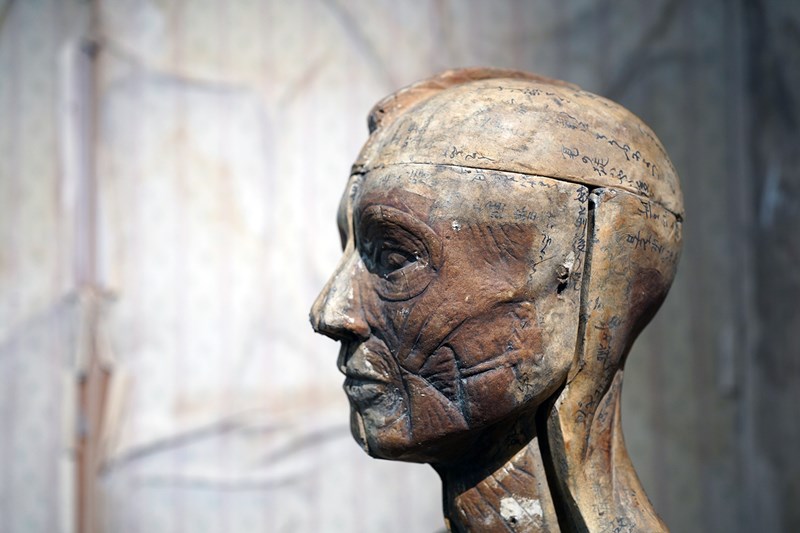Decorative Collective - www.decorativecollective.com
Sellers's Details
DOE AND HOPE
Tel:
Email: [email protected]
https://www.decorativecollective.com/dealers/doe-and-hopeItem Details
The scarce half life size Japanese anatomical model, crafted in "Hariko" (papier-mâché), the front section and cranium opening to reveal the removable inner body parts and sections, each with Japanese characters, naming and explaining each piece, the individual pieces held with stick pins, the whole illustrating sectional views of the body, internal organs, and surviving from Meiji period Japan.
There is some discoloration, spotting and surface wear consistent with age, with creasing as per the photographs. There are some repairs with fingers re-attached, a foot glued, and the obvious missing left arm. One part of the brain is absent(?).
For thousands of years, anatomical models have served as essential tools in medical instruction. While human dissections have been the regular source of information for medical students for the last few centuries, the scarcity of bodies and the religious and social taboos of previous times made the process of acquiring human cadavers a challenge. The advent of anatomical models has countered this issue by supplying accurate anatomical detail in a physical, three-dimensional form superior to that of the two-dimensional illustrations previously used as the primary adjunct to dissection. Artists worked with physicians and anatomists to prepare these models, creating an interdisciplinary interaction that advanced anatomical instruction at a tremendous rate. These models have taken the form of metal, wood, ivory, wax, papier-mâché, plaster, and plastic and have ultimately evolved into computerised and digital representations currently.
Anatomical models have been fabricated for 4000 years, though the earliest reference to their use in medical instruction was in medieval times. In the 11th century, life-sized copper anatomical models depicting 354 acupuncture points were made in China. In the 19th century, the introduction of papier-mâché anatomical models conveyed a similar degree of detail as wax models, but their ease in construction left them more readily available and affordable, reorienting the preference for instructive models. Papier-mâché was popularized in the 19th century by Dr. Louis Auzoux (1797–1880). Studying medicine in 1816 in Paris, Auzoux quickly recognized the low supply of cadavers, the challenges with preservation, and the fragility of wax alternatives and was inspired to find better instructive tools. He visited the workshop of Jean-François Ameline (1763–1835), a professor of anatomy in France who had begun to make papier-mâché—a mixture of gum and paper—models.
An extraordinary example of the many ways in which people, through time and across cultures, sought to understand the workings of the human body, to protect themselves, and care for one another.
- Period: c.1900-20
- Sold
- Location: Buckinghamshire
-
- Dimensions: H: 51cm (20.08in)
- W: 16cm (6.30in)
- D: 12cm (4.72in)
